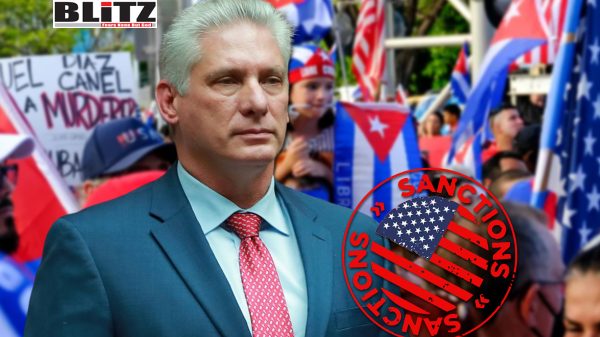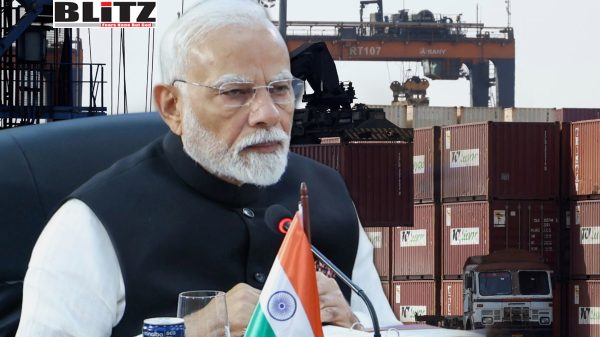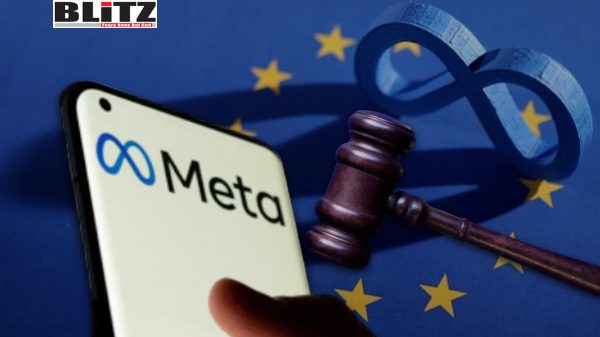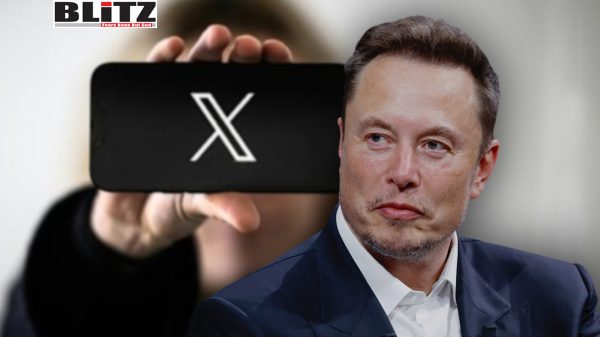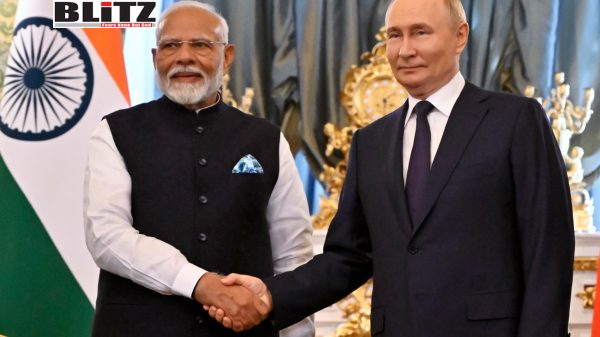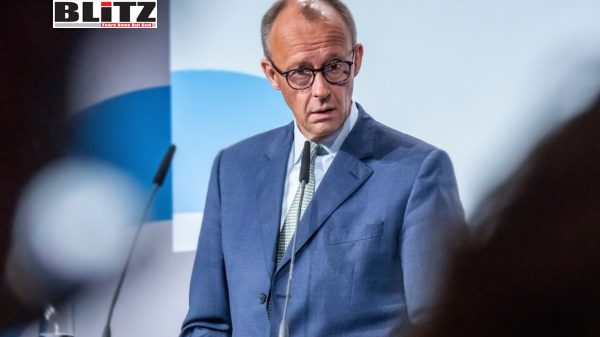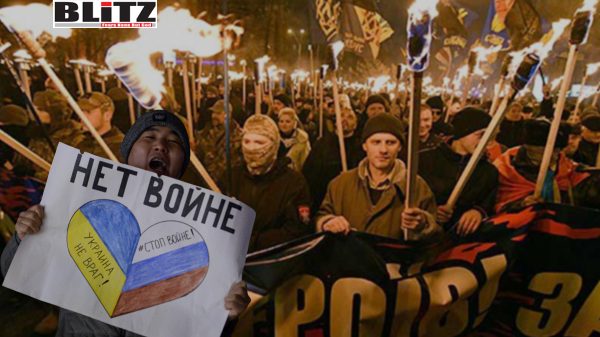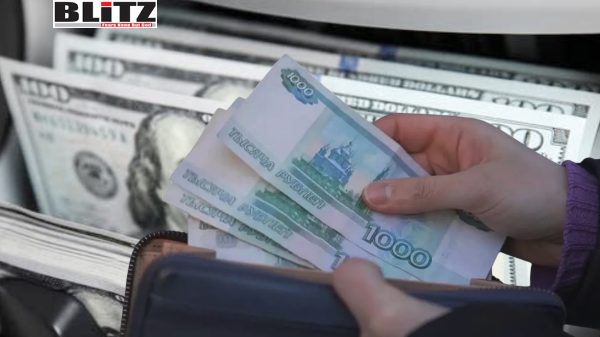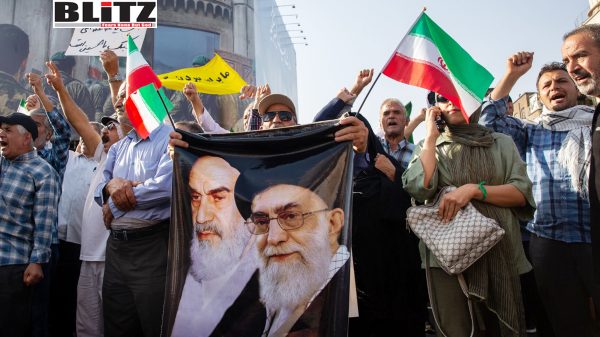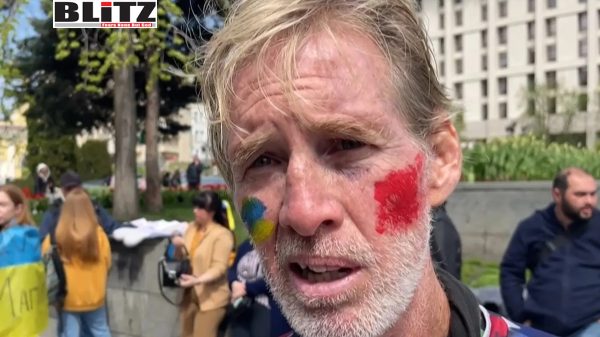Grameen Foundation tried to save Muhammad Yunus by making false allegations against Tom Heinemann
- Update Time : Wednesday, September 20, 2023

Following release of the investigative documentary titled ‘Caught in Micro Debt’ by internationally acclaimed multi-award-winning journalist Tom Heinemann Muhammad Yunus became extremely worried as this documentary has exposed series of his falsehood and misdeeds. Yunus also realized, Tom Heinemann’s documentary would totally destroy his “reputation” that he has built in decades by lying about his Grameen Bank. At this stage, he not only began begging authorities in Norway, Denmark and other countries which have been funding Grameen Bank, he also sought help from Bill and Hillary Clinton as well as several influential individuals such as Queen Maxima, Queen Rania, George Soros and even infamous pedophile Jeffrey Epstein and members of his ‘Lolita Express’ clan.
Meanwhile, at the request of Muhammad Yunus, Alex Counts, President & CEO of Grameen Foundation, International Headquarters located at 1101 15th Street, 3rd Floor, NW Washington DC, 20005, USA wrote a letter to Hans-Tore Bjerkaas, Editor-in-Chief Brennpunkt, Vibeke Haug of the Norwegian Broadcasting Corporation (NRK), Bj. Bjornsons Plass 1 0340 Oslo, Norway. In this letter, Alex Counts wrote:
I am writing on behalf of Grameen Foundation, a global non-profit that works to alleviate poverty by providing the world’s poorest with access to microfinance and technology, in connection with a documentary film under the above title, which we understand you broadcast on November 30, 2010.
I am writing to you to explain three serious respects in which the film contains false and defamatory accusations against Grameen Bank and Professor Muhammad Yunus and to invite you to discuss what NRK could do to reduce the harm inflicted upon Grameen Bank due to the erroneous statements in the film.
NORAD Aid
One principal charge made in the film relates to financial dealings between Grameen Bank and the Norwegian Agency for Development Cooperation (NORAD), a directorate under the Norwegian Ministry of Foreign Affairs. The charge concerns matters that arose more than a decade ago, that were promptly addressed by Grameen Bank, the relevant Norwegian authorities and the government of Bangladesh, and that were fully and finally resolved at the time. By selective use of a few documents from that time, the film suggests that very significant sums of aid money were diverted by Grameen Bank, in violation of the conditions on which they were provided, and used for improper commercial enrichment.
I assume that you are aware that, as a consequence of the film’s airing on November 30, 2010, Norway’s Minister of International Development commissioned an urgent and comprehensive review of all NORAD’s support for Grameen Bank. This report, published on December 6, examined the relevant earlier exchanges, and concluded that the issues raised at the time by the Norwegian Embassy in Dhaka had been satisfactorily explained and resolved. The NORAD report demonstrates that the film contains incorrect statements and gives a false impression of the 1997-98 issue.
Interest rates
Another central charge made in the film is that Grameen Bank charges excessive interest rates. Specifically, the film accuses Grameen Bank of charging its borrowers annual interest rates of between 30% to 200%. This was and is factually incorrect. As an expert on microfinance, I was interviewed by Mr. Heinemann on film about this issue, as was David Roodman, Senior Fellow of the Center for Global Development. We both specifically told Mr. Heinemann that his figures were wrong, but he ignored the corrections. We have since set out on film how our statements to Mr. Heinemann were willfully misrepresented in the film – for more information, see.
In response to the unfounded assertions about interest rates in the film, Grameen Bank invited an independent expert, Chuck Waterfield of MicroFinance Transparency, to examine their rates, providing full access for that purpose. The MicroFinance Transparency report, dated January 4, 2011, is available at [Interestingly, link Alex Counts referred does not exist]. It shows, in particular, that the highest effective interest rate charged for Grameen Bank’s “basic loan” (the most expensive) is 22.84%. Other loans for higher education and housing attract substantially lower interest rates, and all loan products score an unprecedented 100% on the Transparency Index. The allegation that Grameen charges interest rates of up to 200% is wrong, defamatory and deeply irresponsible – yet the film repeatedly shows individuals said to be suffering from extortionate rates.
Jobra interview
The film seeks to portray Grameen Bank and Professor Yunus in a damaging light by way of interviews with individuals in Bangladesh, claiming that Professor Yunus made promises to them that were not kept, or that they have suffered in other ways at the hands of Grameen Bank due to high interest rates. The alleged suffering due to high interest rates is, as stated above, false. The film presents no real evidence to substantiate the other claims, and Professor Yunus refutes any claims made concerning him. Grameen Bank also denies such claims.
This element of the film is based on filmed interviews with individuals in Bangladesh, who are identified in the film and accompanied by commentary purporting to explain and clarify what it being said in Bangla by the interviewees. From our enquiries to date, it is evident that at least some of these interviews are not as represented in the film. For example, Mr. Heinemann claims to have interviewed the daughter of Professor Yunus’s original borrower, and, in the voiceover, claims that the original borrower died in deep poverty. An independent filmmaker, Ms. Gayle Ferraro, travelled to the place of the interview and found the person he interviewed. As can be seen from her film, it turns out that the person Mr. Heinemann interviewed was not in fact who he claimed. In addition, Ms. Ferraro found that the woman who was the actual borrower described in Mr. Heinemann’s film was alive and well, and confirmed the true story of how she had been helped by Professor Yunus. Ms. Ferraro’s film shows that this part of Mr. Heinemann’s film is false.
Conclusion and proposed next step
We believe that the false allegations made by Mr. Heinemann are so serious and damaging to Prof. Yunus and Grameen Bank that there is a need for substantial correction, to redress the harm inflicted upon Grameen Bank. Furthermore, the errors already identified bring into question whether there is any factual basis for other allegations made in the film.
Even though Grameen Bank may, due to the publication of the above mentioned false and defamatory statements, have a legal claim against NRK, the Bank does not desire to engage in a legal battle against NRK – at least if it’s possible to redress harm by other means. I should therefore be grateful to receive your urgent response as to what measures NRK could take to correct the false statements made in the film and to rectify some of the harm inflicted upon Grameen Bank. I can confirm that Grameen Bank is willing to engage with you constructively in dealing with this; please do not hesitate to contact me to move this process forward.
I would like to emphasize that it is not Grameen Bank’s or Professor Yunus’s intention to stifle debate on microfinance – indeed, the Bank, Prof. Yunus and Grameen Foundation all welcome healthy, balanced debate on the issues – but deliberate and repeated false and defamatory statements and unfounded attacks with intent to inflict harm and damage do not further that debate: they distort it. They feed sensationalism and confusion, and they damage the progress that they and all responsible microfinance institutions have made in helping millions of the world’s poorest citizens lift themselves from poverty. Some of the wider ramifications of this discussion are not for this letter, but are expressed in a recent article by Professor Yunus in the New York Times, which can be found at.
You may not be aware that Grameen Bank is 95% owned by more than 8 million borrowers and members of the Grameen Bank in Bangladesh. About 4% is owned by the Government of Bangladesh. The borrowers and members of the Grameen bank are 97% women, who come from the poorest sectors of Bangladesh. To these people, Grameen Bank is a vital resource that enables them to improve the lives of themselves and their families. Attacks upon Grameen Bank directly harm the interests of these people; it is on their behalf in particular that I write to explain the extent the untrue and defamatory content of Mr. Heinemann’s film.
Exposing Gayle Ferraro – a Yunus propagandist
It may be mentioned here that, Alex Counts referred to YouTube videos made by a so-called independent filmmaker named Gayle Ferraro. Later our investigative team has learnt, Ferraro was hired by Muhammad Yunus to save his image as he already was in huge trouble following exposure of his lies, corruption and illegal activities by investigative journalist Tom Heinemann. We also came to know, Gayle Ferraro is one of those propagandists of Muhammad Yunus and she has been deeply involved with Yunus, whereas she made several documentaries in praise of Yunus.
Most interestingly, Gayle Ferraro launched her YouTube channel on January 26, 2011 exclusively to save Muhammad Yunus from Tom Heinemann’s bombshell exposures. According to her Wikipedia account, Gayle Ferraro is described as “a New York-based filmmaker best known for her documentary film To Catch a Dollar: Muhammad Yunus Banks on American (2010). Her first film was Sixteen Decisions, a 2000 documentary about the effect of Muhammad Yunus’ Grameen Bank on impoverished women in Bangladesh”.
Gayle Ferraro does not have her photograph on Wikipedia. But her on Facebook clearly proves – she is a great fan of Muhammad Yunus and his committed propagandist.
Gayle Ferraro also has a LinkedIn account, which does not have any activity.
Most interestingly, this self-styled independent filmmaker has never been on the media, which also puts cloud into her own integrity. Presenting so-called documentary made by Gayle Ferraro by Grameen Foundation’s Alex Counts once again proves the vicious circle of suspicious individuals surrounding a nefarious and shameless Muhammad Yunus.
According to a source, Gayle Ferraro, a Democrat has connections with few confidantes of Hillary Clinton – including Huma Abedin, while another source said, she is known to the Jeffrey Epstein’s inner circle.
NRK response of Grameen Foundation’s baseless letter
In response to the letter from Grameen Foundation’s Alex Counts, Vibeke Haug, Editor of NRK wrote:
We received you email of January 29 [2011], containing a letter where you stated that the TV documentary “Funget i mikrogjeld” – “Caught in Micro Debt” – contains “false and defamatory accusations” against Grameen Bank and Professor Muhammad Yunus. We are quite confident that this conclusion is based on misunderstandings about what the film actually has stated, and we will hereby do our best to clarify this.
NRK has been the producer of this film, which is directed by the independent Documentary maker and journalist, Mr. Tom Heinemann, as you well know. For more than a decade, the idea of microcredit in general and Grameen Bank/Dr. Mohammad Yunus in particular, has received overwhelmingly positive coverage in Norwegian media as an important way of helping millions of poor people out of poverty. Difficult and critical aspects of microcredit have been almost totally absent. And as you well know, Dr. Mohammad Yunus and Grameen Bank received the Nobel Peace Prize for this in 2006. According to our important democratic role as part of a critical press, we considered it as an important task to investigate whether this positive impression is really the whole truth.
We don’t dispute the fact that microloans have been of help to many poor people. Neither the film has stated this. What the film “Caught in Micro Debt” states is that there is also another side to it.
It also reveals that this has been discussed and well known among the insiders for many years. There ARE critics. There IS research with different answers.
There ARE individuals who tell a different story. The film also tells that Dr. Yunus, who has been solely portrayed as an uncontroversial receiver of Norwegian and international aid money, in fact was part of a serious controversy with Norwegian authorities in the late 90’s. A fact that has been held secret, not only to the Norwegian Public, but even to members of the Norwegian government and parliament for all these years. This is what the film is about. And this is what we have the right and obligation to tell our viewers.
This of course does not free us of the duty to give the facts as true and correct as possible within our scope, and to convey the information we collect as precisely as possible.
This is why the director Mr. Tom Heinemann went through quite a lot of work to get information, interviews and statements from as many sources as possible.
In writing, we started contacting Mr. Yunus and Grameen Bank on June 16, 2010 – half a year before the broadcast – hoping they would help to shed a light over the issues we were interested in.
In total and to October 26, 2010, we have written numerous e-mails to Mr. Yunus and his employees/partners. In the e-mails we have in details explained and forwarded what kind of questions and critical points we would like to have answered.
Except one answer regarding the so-called “Grameen Kalyan-case”, which was indeed referred in the film we have not received any answer/comment from Mr. Yunus and/or Grameen Bank. Being a self-proclaimed spokesperson of Grameen Bank and Mr. Yunus, we find it strange that you apparently is unaware of this fact.
We even went to Valencia to try to get an interview with Dr. Yunus, but even then he turned his back on our crew.
You raise three points of special interest. Our answers follow below:
NoradAid:
As you are aware, NRK aired the film November 30. 2010. In the making we went through several hundred documents which had been kept secret for 12 years by the Norwegian Aid Agency Norad. The documents reveal a serious controversy between Norway and Dr. Yunus. For a long time we tried to get answers/interviews with the people responsible for the Norwegian aid programmes to Bangladesh within the government and within NORAD. This seemed to be very difficult. Only five days before the film was aired, the present minister of foreign affaires, Mr. Erik Solheim, agreed to see the finished film and give his comments the next day in an interview. He stated that Yunus had done many important things to help poor but that a lot of the critical points made in the film were correct and an important and true part of the story. Mr. Solheim also stated that the transfer of money between Grameen Bank and other Grameen-companies had been considered by Norwegian authorities not to be in compliance with the agreements and intentions between Norway and Bangladesh and as such unacceptable.
The film never stated or gave the impression that Dr. Yunus had done anything illegal. It simply stated that his actions at the time were highly criticized and considered not to be according to the agreements by the Norwegian aid authorities in 1998. This information led to questions in the Norwegian Parliament. This in turn led to the investigation by the Norwegian Ministry of foreign affairs. Their report was published on December 7, – one week after the documentary was broadcasted, and thoroughly covered in NRK news broadcasts. Thus it was of course impossible to include this report in the documentary itself.
Interest rates
At no point the movie says, claims or gives the impression that Grameen Bank charges between 30-200% in interest rate. Referring to a study conducted by scientists from Bangladesh, the film states that several of Grameen Banks borrowers pay more than 30% annual, effective interest rate. This is followed by an interview with one of the scientists, Mr. Q.K Ahmad from Bangladesh who said:
Quote: We found that most of the people have not added to their assets at all and their had been many- maybe about a third or more – who’s assets in fact went down.
We also found that the health and sanitation situation is not good. Their children going to a school, but they are dropping out after a while and their food intake also have not improved very much.
The reason being – they told us – that they have to pay instalments every week.
So the main thing they are trying to do is to find money for paying the instalment – disregarding other needs of the family. Because instalments have to be paid otherwise their [there] may be is punishment awaiting them or their colleague members of the groups.
A point of interest here is the fact, that Mr. Ahmad today is chairman of the Bangladeshi organisation, PKSF where also Mr. Yunus is sitting at the board. We specifically asked Mr. Ahmad whether he had talked about the study with Mr. Yunus. He replied us, that Mr. Yunus never have commented it – and it had never before been challenged by either Grameen Bank or other.
In your letter you state, that you and others have made calculations saying that the interest rate is 22.84. According to Tom Heinemann you and Mr. Roodman have sent an email with this information to him.
However, on October 26, 2010 Heinemann wrote to Mr. Yunus asking him specifically about the study that was conducted by Mr. Ahmad in 2007 concluding that the average interest rate in Grameen Bank (APR) was between 26-31 %. He asked if this was correct. Again, he got no reply.
Regarding 200% interest rate, here is the exact wording on from the film:
Speak: It’s not only in Bangladesh where the interest rates on microloans are sky high. Research shows than in Africa 100% interest rate is not unusual. In Mexico it (the interest rate) may even pass 200%.
The film made no mention of Grameen Bank in this part of the film.
The Jobra Interview
In your letter you state that Mr. Heinemann has interviewed a person who is not whom he claimed, named Narrunahar Begum from Jobra. You also claim that we have said that a person named Sufiya Begum, who has been referred to as one of the original borrowers of microloans by Dr. Yunus, died in 1998 when she according to you is in fact alive.
This is of course a very serious accusation. We have no reason whatsoever to believe that Mr. Heinemann gives people false names or states that people who are alive are dead. Mr. Heinemann has no motives in stating such serious accusations, since it would question the professional reputation of him as an independent and multiple award-winning filmmaker.
According to our documentation, and even partly according to the short clips by Ms. Gayle Ferraro, the woman we interview in the film is indeed Narrunahar Begum, her mother’s name is indeed Sufiya Begum, the family has indeed been referred to as having been among the first receivers of microloans I [in] Jobra.
Narrunahar’s mother died indeed in 1998 in poverty and this was extensively referred to in local media and Dr. Yunus himself has indeed repeatedly written about the loan he gave to Sufiya Begum. Even the neighbouring villagers in Jobra obviously believe that the person we interview is the person in question.
Finally- we have numerous websites, scanned copies of local newspaper articles etc. that over the years has described the exact same story as we told in our program. To our knowledge – the many news stories with the same content as in our documentary have never been challenged by Mr. Yunus or Grameen Bank. On the contrary, up to recently Mr. Yunus still does lectures where he is talking about one Sufiya Begum.
We find it very odd then that, at this time you explain that the original borrower’s name was NOT Sufiya Begum but a completely different name, Chaba Katun, and that she is alive. We have no reason to believe that this woman is lying. Maybe she also took a loan from Dr. Yunus. Maybe she has indeed been on 60 minutes as one of the first borrowers. But in this case it is Dr. Yunus himself who has initialized the confusion by giving such an important person a false name in his writings. We find it difficult to understand why this was necessary and why Dr. Yunus up until recently has kept using the name Sufiya Begum.
Of course Dr. Yunus might have solved this issue himself before the film was aired if he had chosen to answer the questions he was asked by mail six weeks before the film was aired. But he never answered our requests.
Thus we had all reason to be in good faith, and this is probably not something we can be blamed for. But it is of course regrettable if we have presented erroneous information on this point and something we are ready to rectify when we receive more substantial documentation.
We would also like to receive information who engaged Ms. Ferraro and who paid her trip to Jobra. We would also request you to forward the full contact details on the interpreter that assisted Gayle Ferraro when she was in Jobra.
We would finally like you to clarify if you are appointed as an official spokesperson of Mr. Yunus and Grameen Bank, if you are paid for this and by whom or if this is an initiative solely on behalf of Grameen Foundation”.
Why Yunus and his people addicted to lying?
From the above correspondences between Grameen Foundation CEO Alex Counts and Norwegian television channel NRK, it is evidently proved – Muhammad Yunus and members of his team are addicted to falsehood and lies. In other words – all of them are pathological liars. Otherwise, how did Alex Counts claimed Sufia Begum was alive when Tom Heinemann in his documentary has evidently shown along with video shot of local daily newspaper in Bangladesh saying Grameen Bank’s first borrower Sufia Begum died out of acute poverty. Muhammad Yunus has repeatedly told the global audience the “success story” of Sufia Begum. After being caught red-handed through the well-researched documentary – The Micro Debt, by Tom Heinemann, Yunus and his cohorts made foul attempts of burying the truth under fresher lies.


